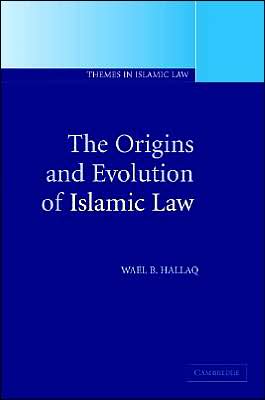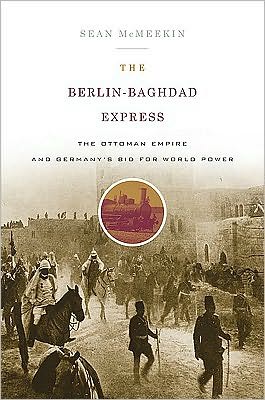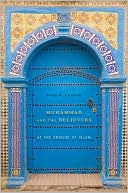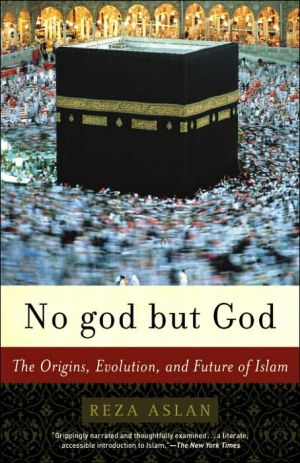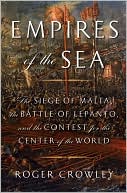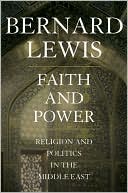The Origins and Evolution of Islamic Law
This book, covering more than three centuries of legal history, presents an important account of how Islam developed its own law while drawing on ancient. Near Eastern legal cultures, Arabian customary law, and Quranic reform. The development of the judiciary, legal reasoning, and legal authority during the first century is discussed in detail, as is the dramatic rise of prophetic authority, the crystallization of legal theory, and the formation of the all-important legal schools. Finally the...
Search in google:
The history of Islamic law from pre-Islamic times across three centuries.
\ Cambridge University Press\ 0521803322 - The Origins and Evolution of Islamic Law by - Wael B. Hallaq\ Excerpt\ \ \ \ \ Introduction\ \ \ One of the fundamental features of the so-called modern Islamic resurgence is the call to restore the Sharīʿa, the religious law of Islam. During the past two and a half decades, this call has grown ever more forceful, generating religious movements, a vast amount of literature, and affecting world politics. There is no doubt that Islamic law is today a significant cornerstone in the reaffirmation of Islamic identity, not only as a matter of positive law but also, and more importantly, as the foundation of a cultural uniqueness. Indeed, for many of today’s Muslims, to live by Islamic law is not merely a legal issue, but one that is distinctly psychological.\ The increasing importance of Islamic law in the Muslim world since the late 1970s and early 1980s has generated in western academia a renewed interest in this field, which had attracted only peripheral scholarly interest during the preceding decades. And even though the formative and modern periods were, and continue to be, two of the most studied epochs in the history of Islamic law, they remain comparatively unexplored. Worse still is the state of scholarship on the intervening periods, which continue to be a virtual terra incognita.1\ An index of the state of scholarship on the formative period is the fact that, to date, there has not been a single volume published that offers a history of Islamic law during the first three or four centuries of its life. At least three works have thus far appeared bearing titles that contain the designation “Origins,” in one way or another associated in these same titles with “Islamic law” or “Islamic jurisprudence.”2 None, however, can boast \ content that truly reflects what is implied in these titles, all three volumes being specialized studies that – however meritorious some of them may be – endeavor to study the formative period through a rather narrow lens.\ Although the main contours of legal development during the formative period can be culled from existing primary sources, there is much that remains unexplored. The quality of the sources from the first centuries of Islam is historiographically problematic, but even if this problem did not exist, we would still find that these sources remain quantitatively insufficient. For example, we possess no court records or any other source that can inform us of how the judiciary operated during the formative period, or what went on in courts of law. We have no clear idea of the types of problems that were litigated, how they were resolved, what legal doctrines were applied, how the parties represented themselves, how accessible courts were for women, how the judges used social and/or tribal ties to negotiate and solve disputes, and so forth. Thus, none of these issues can be addressed here in a comprehensive fashion, if at all. In line with the introductory nature of the present series, I attempt in this volume to sketch the outlines of the formative period, presenting a general survey of the main issues that contributed significantly to the formation of Islamic law. And it is in this general coverage that the present work differs from its above-mentioned predecessors, which offer topical or partial treatments rather than a synthesized picture of formative legal development.\ Crucial to the present endeavor is the definition of a formative period. What is it that distinguishes a formative era from other historical periods? More specifically in our context, what are the criteria through which we can identify the formative period in Islamic law? Until recently, it has been thought that this period ended around the middle of the third century H (ca. 860 AD), when, following Joseph Schacht’s findings, we thought that the all-important legal schools, as personal juristic entities, had come into existence and that, again after Schacht, Islamic law and legal theory had come of age. More recent research, however, has shown that Schacht’s findings were largely incorrect and that the point at which Islamic law came to contain all its major components must be dated to around the middle of the fourth/tenth century, an entire century later than had originally been assumed. For our purposes, I define the “formative period” as that historical period in which the legal system arose from rudimentary beginnings \ and then developed to the point at which its constitutive features had acquired an identifiable shape.\ I say “identifiable” because all that is needed in the context of “formation” is the coming into existence of those attributes that distinguish and make unmistakably clear the constitutive features of that system. The notion of “formation,” therefore, would have to be restricted to the evolution of the general features of the system, since the details – or what we might, philosophically speaking, call “accidental attributes” – endured constant movement and change. Thus, and to continue with our philosophical terminology, formation must be defined in terms of “essential attributes” which make a thing what it is; or, conversely, the absence of any essential attribute would alter the very nature of the thing, rendering it qualitatively different from another in which that attribute does exist. In the case of Islamic law, the essential attributes – those that gave it its shape – were four: (1) the evolution of a complete judiciary, with a full-fledged court system and law of evidence and procedure; (2) the full elaboration of a positive legal doctrine; (3) the full emergence of a science of legal methodology and interpretation which reflected, among other things, a large measure of hermeneutical, intellectual and juristic self-consciousness; and (4) the full emergence of the doctrinal legal schools, a cardinal development that in turn presupposed the emergence of various systemic, juristic, educational and practice-based elements. (Any other essential attribute, such as, e.g., the religious character of the law, must ultimately and derivatively fall under one or more of these four.)\ By the middle of the third/ninth century, the third and fourth attributes had not yet developed into anything like their complete form. By the middle of the fourth/tenth century, however, all of them had. And this is the cut-off point. All later developments, including change in legal doctrine or practice, were “accidental attributes” that – despite their importance for legal, social and other historians – did not affect the constitution of the phenomenon we call Islamic law. With or without these changes, Islamic law, for our present purposes, would have remained Islamic law, but without the legal schools or the science of legal theory, Islamic law cannot be deemed, in hindsight, complete.\ Far more complex than plotting the end-point of the formative period is the determination of its beginning. It is no exaggeration to say that of all the major questions in Islamic legal history, the issues involved in studying these beginnings have proved the most challenging. The problems associated with “beginnings” have for long stemmed more from unproven assumptions than from any real historical evidence. Hence, the classic \ Orientalist creed that the Arabia of the Prophet was a culturally impoverished region, and that when the Arabs built their sophisticated cities, empires and legal systems, they could not have drawn on their own vacuous cultural resources. Instead, it is maintained, they freely absorbed the cultural elements of the societies they eventually conquered, including (but especially) the Byzantino-Roman and Sasanid civilizations. In this account, Syria and Iraq become the loci of legal transmission.\ These assumptions have consistently failed to stand the test of scrutiny, as recent research has shown. Except in a few cases, attempts to demonstrate genetic links with these cultures have proved futile, if only because Arabia has provided an equally, if not more, convincing source for much of the law that Islam came to adopt. Chapter 1, therefore, attempts to provide a more balanced account of pre-Islamic Arabia as a region that was an integral part of the general culture of the Near East. Through intensive contacts with the northern Arabs who dominated the Fertile Crescent during the centuries before the rise of Islam, the Peninsular Arabs maintained forms of culture that were closely linked to those prevailing in the north. The Bedouins themselves were to some extent part of this cultural map, but the sedentary and agricultural settlements of the Hejaz were even more dynamic participants in the commercial and religious activities of the Near East. Through trade, missionary activities, and northern tribal connections (and hence the constant shifting of demographic boundaries), their inhabitants knew Syria and Mesopotamia as well as the inhabitants of the latter did the Hejaz. When Muhammad embarked on his mission of establishing a new religion and building a state, he and his collaborators were well acquainted not only with the political and military problems of the Fertile Crescent, but also with its cultures and much of its law. While law as a doctrine and legal system does not appear to have been on the Prophet’s mind during most of his career, the elaboration of a particularly Islamic conception of law did begin to emerge a few years before his death. The legal contents of the Quran, viewed in the larger context of already established Jewish law and the ancient Semitic–Mesopotamian legal traditions, provide plentiful evidence of this rising conception.\ During the first decades after the Prophet’s death, an Islamic polity took shape, guided by both the Quranic legal ethic and the customary laws of the Peninsular Arabs – laws that underwent a gradual transformation under the influence of emerging religious values. Chapter 2 provides a sketch of the evolving legal culture as reflected in the transformations that took place in the office of the proto-qāḍīs, the earliest quasi-judges of Islam. The increasing specialization of this office as a judicial function represents \ an index of the evolution of an Islamic legal ethic, signified by the concomitant rise of Prophetic authority. Chapter 3 continues this theme by exploring the emergence of the so-called legal specialists, a group of men who in their private lives elaborated a legal doctrine that became the juristic foundation of legal practice. With the rise of the class of legal specialists at the end of the first century H and the beginning of the next (ca. 700–40), there again occurred a concomitant development in the construction of Prophetic authority, represented by the emergence of ḥadīth, the verbal expression of the Prophetic model. Chapters 2 and 3 thus explain, among other things, how Prophetic authority was to emerge out of the ideas of social consensus and the model behavior (sunna; pl. sunan) of the tribal and garrison societies that contributed to the first stage of empire-building.\ Chapter 4, which takes up the next stage of judicial development, describes the process through which the Muslim court, as part of the empire’s structure, acquired its final shape, in which all its essential features came into existence in developed forms. Chapter 5 treats jurisprudential changes that occurred parallel to the developments in the judiciary described in the previous chapter. Here, we return to the changing dynamics of legal authority, which marked a further, but still gradual, shift from what we have called sunnaic practice to a staggering proliferation of Prophetic ḥadīth. In this chapter, we also describe the relationship between these competing sources of the law and the positive concepts of consensus, ijtihād and raʾy. A discussion of the changing relationship between the latter two also illustrates the evolving dynamic of legal reasoning toward stricter and more systematic procedures.\ By the end of the second/eighth century, all essential features of the judiciary and positive legal doctrine had clearly acquired a highly developed form, only to undergo further refinements, mutatis mutandis, throughout the centuries thereafter. But legal theory, the so-called uṣūl al-fiqh, remained in embryo, still struggling to take shape. Indeed, the competing movements of the rationalists and the traditionalists (initially discussed in chapter 3, section 4) would have to settle on a compromise before such a theory – which ultimately came to define Sunnite Islam itself – could emerge. Chapter 6 examines what I have called the Great Rationalist–Traditionalist Synthesis, and how legal theory emerged out of it. The remainder of this chapter offers an outline of this theory as it stood during the second half of the fourth/tenth century.\ Chapter 7 offers an account of the rise of doctrinal legal schools (madhhabs), the last feature of Islamic law to develop. These schools originally \ emerged out of the scholarly circles of legal specialists, going through a middle stage dominated by what I have termed “personal schools” (a designation mistakenly used by some scholars to refer to what I in this monograph have characterized as doctrinal schools). In this chapter, I also attempt to explain why only four legal schools survived, and why the others failed to do so. It will become obvious that the success of the four schools, as well as their evolution to the final stage of doctrinal schools, was partly connected with a particular relationship that existed between law and the legal profession, on the one hand, and the political, ruling elite, on the other. Although this chapter completes the account of the formation of Islamic law in all its constitutive elements, this relationship between law and politics remains in want of further analysis, and this I take up in the eighth and final chapter. Here, I discuss the relative independence of positive law from government, and the symbiotic relationship that existed on the basis of mutual interests between the legal profession and those wielding political power. Despite all of the attempts of the latter to manipulate the law, classical Islam, in my view, offered a prime case of the rule of law. To say that the caliphs, rulers and their proxies ultimately fell under the imperatives of the religious law is merely to state the obvious. Yet, it is undeniable that political authority and power did affect the evolution of certain aspects of law, especially the direction in which the legal schools developed and were shaped. The reader, therefore, may find it beneficial to review chapter 7 after having read chapter 8. Finally, the conclusion offers a summary of the main issues raised in this volume, with a view to providing a synthetic account of how these issues contributed to the formation of Islamic law.\ One further remark about calendars. This book uses a dual system of dating: one is the Muslim Hijri calendar, the other Gregorian (e.g., 166/782). To omit the former would deprive the reader of the sense of relativity of time in Muslim history; and to omit the latter would probably aggravate the problem even further (and in other ways to boot). I have therefore thought it judicious to use both calendars. But this method has its own problems, hence the following caveat: In this work, it is often stated that this or that event occurred, for example, “at the end of the second/eighth century.” In fact, the end of that Hijri century, say 190–200, corresponds to 805 to 815 AD, i.e., the beginning of the ninth century AD. Stylistically, it would be awkward consistently to render the Gregorian equivalent of the approximate Hijri date numerically. So the reader is advised that in such contexts, the Gregorian dates in this book are provided merely as guidelines, whereas the Hijri calendar reflects the \ more accurate dating. However, the reader will do well to keep in mind that the ends of the first three Hijri centuries roughly correspond to an average of a decade and a half in the beginning of each of the eighth, ninth and tenth centuries AD.\ \ 1 For analysis of the selective interests of modern scholarship and their political implications, see Wael Hallaq, “The Quest for Origins or Doctrine? Islamic Legal Studies as Colonialist Discourse,” UCLA Journal of Islamic and Near Eastern Law, 2, 1 (2002–03): 1–31. See also the introduction in Wael Hallaq, ed., The Formation of Islamic Law, in Lawrence I. Conrad, ed., The Formation of the Classical Islamic World, vol. XXVII (Aldershot: Ashgate Publishing, 2003).\ 2 Joseph Schacht, The Origins of Muhammadan Jurisprudence (Oxford: Clarendon Press, 1950); Harald Motzki, Die Anfänge der islamischen Jurisprudenz: Ihr Entwicklung in Mekka bis zur Mitte des 2./8. Jahrhunderts (Stuttgart: Franz Steiner, 1991), trans. Marion H. Katz, The Origins of Islamic Jurisprudence: Meccan Fiqh before the Classical Schools (Leiden: Brill, 2002); and Y. Dutton, The Origins of Islamic Law: The Qurʾan, the Muwa⃛⃛aʾ and Medinan ʿAmal (Richmond: Curzon, 1999).\ \ \ \ \ CHAPTER 1\ The pre-Islamic Near East, Muḥammad and Quranic law\ \ \ 1. THE GENERAL NEAR EASTERN BACKGROUND\ It was in the Hejazi cities of Mecca and Yathrib – later renamed Medina – that a man called Muḥammad came forward to proclaim a new religion with a political order at its center. By the time of his death in 11/632, he had left behind a small state and clear notions of justice, but with underdeveloped ideas of law and an even less developed judiciary. Soon, however, Islam was to conquer lands east and west, ranging from western China to the Iberian peninsula. Along with this territorial expansion, the new religion generated a full-fledged, sophisticated law and legal system in the short span of the three-and-a-half centuries that followed its inception.\ By the time of Muḥammad, Mecca and its northern neighbor Yathrib had known a long history of settlement and were largely a part of the cultural continuum that had dominated the Near East since the time of the Sumerians. True, the two cities were not direct participants in the empire cultures that prevailed elsewhere in the Near East, but they were tied to them in more ways than one. Prior to the Arab expansion in the name of Islam, Arabian society had developed the same types of institutions and forms of culture that were established in the imperial societies to the south and north, a development that would later facilitate the Arab conquest of this region. This conquest, as one historian put it, “helped to complete the assimilation of the conquering peoples, begun in Arabia, into general Middle Eastern society.”1 It was these societies and cultures that provided the larger context in which Islam, as a legal phenomenon, was to grow. This context, however, was only to become relevant much later, as we shall see in due course.\ \ In the century or so before the rise of Islam, there existed three centers of empire: the Byzantine in the north-west, the Sasanid in the north-east and the Yemenite in the south. This latter was subsidiary to the former two by virtue of being, at different times, either a vassal state of the Ethiopian kingdom – which in turn was a constant ally of the Eastern Roman Empire – or under the direct occupation of the Sasanids. But early on the Yemen had experienced a long history of independent kingdoms that attained a high level of civilization. It possessed a strategic commercial position, lying on the ancient trade route from the Indonesian Archipelago and India to Syria. Spices, incense, leather, silk, ivory, gold, silver, glue and precious stones were among the many items that made their way through the Yemen to Pharaonic Egypt and later to the Greek, Roman and Byzantine Empires. The Maʿīnite, Sabaʾite and Ḥimyarite kingdoms that flourished in the Yemen developed a sedentary style of life and governance, and an elaborate urban existence complete with markets, palaces and imposing houses, supported by sophisticated agrarian and commercial networks.\ In 525 AD, eight decades before the rise of Islam, the Abyssinians occupied the Yemen and brought an end to the Ḥimyarite kingdom, ruled at the time by the Jewish monarch Dhū Nuwās. On the surface, and probably for propaganda reasons, the occupation was made to appear as a retaliatory measure against the oppressive religious policies of this king, who persecuted the Christians of the Yemen, especially those at Najrān. However, underlying this conquest were the commercial interests of both the Ethiopians and the Byzantines. Thus, although the Yemenite ruling elite soon acquired independence, it remained nominally a vassal province of the Abyssinian kingdom. In 570 AD, close to the time of Muḥammad’s birth, the Christian Abraha launched a military campaign with a view towards subduing the Hejaz, a campaign that seems to have been dictated by a broader Byzantine policy to secure the trade routes from India to the Syrian territories in the north. The decimation of the Ḥimyarites was only the first step in the process. The subjugation of the Arabian trading tribes in the Hejaz, especially at Mecca, was supposed to be the second.\ The latter scheme, however, reportedly fell apart when disease wrought havoc with Abraha’s military campaign, and sent it back to the Yemen in ruins. This setback signaled the end of Abraha’s rule, and with it the hegemony of the Abyssinian kingdom over the Yemen. In 575 AD, the Sasanids conquered the country and restored to the throne the descendants of Dhū Yazan. Their rule, however, did not last for long: by the end of the \ century or the very beginning of the seventh, the Yemen was ruled exclusively by Sasanid governors who initiated a policy of rebuilding the country and restoring the economic networks that linked its cities.\ The Sasanid occupation of the Yemen was an extension of their imperial policies, begun three centuries earlier in the lands that bordered on theirs and on the Byzantine vassal state of the Ghassānids. In southern and western Iraq, they set up an autonomous state headed by the Lakhmid kings to rule Ḥīra, a major city on the west side of the Euphrates. Opposite this, and competing bitterly with the Sasanids, stood the Roman and, later, Byzantine Empires which relied on the Ghassānids to do their bidding against their arch-enemy and to protect their interests in this region. The Ghassānids set up their state at Busra Askisham in the Ḥūrān region, and Palmyra functioned, for all practical purposes, as their second capital.\ It was not a coincidence that both the Ghassānids and the Lakhmids were chosen for their respective roles as vassal kingdoms. As southern tribal confederations, they had a long experience with citied life, high civilization and, like all urban populations, obedience to central authority. Both originally came from the eastern parts of the Yemen which, since the second or third century BC, if not earlier, had enjoyed a high level of culture, complex forms of political life and knowledge of agriculture, trade and commerce. Ḥīra, the Lakhmid capital, was a center of the fine arts, science (particularly medicine), architecture and literature. It had been the recipient of massive Arab migration since the first century AD, when the Azd, a constituent group of the Tanūkh confederation, settled its surrounding area. Ḥīra and its hinterland boasted a rich agriculturalist and commercial economy, exclusively controlled by the Lakhmid tribal confederation. It manufactured leather and steel armor, and produced all sorts of cotton, wool and linen textiles. The Lakhmids had adopted Christianity at an early date, perhaps as early as the fourth century AD, and although the majority of the inhabitants of Ḥīra and of the surrounding areas appear to have adopted the Nestorian version (especially ʿAbd Qays, Tamīm and Bakr b. Wāʾil), there were many who were Jacobites, as well as a considerable number of Magians, Zoroastrians, Jews and pagans.2\ Like the Lakhmids, the Ghassānids were also southern tribes who migrated to the Syrian north during the early part of the sixth century AD, having succeeded other tribal confederations that had settled in the area after the collapse of the Nabatean kingdom. Granted the title of king by the\ \ \ \ \ © Cambridge University Press
1The pre-Islamic near east, Muhammad and Quranic law82The emergence of an Islamic legal ethic293The early judges, legal specialists and the search for religious authority574The judiciary coming of age795Prophetic authority and the modification of legal reasoning1026Legal theory expounded1227The formation of legal schools1508Law and politics : caliphs, judges and jurists178
\ From the Publisher"The book is an essential contribution to the field. Highly recommended. Essential for collections on Islam and the history of law." \ --Choice\ "...succinct, up-to-date, and stimulating account of the early history of Islamic law..."\ --Joseph E. Lowry, Department of Near Eastern Languages and Civilizations, University of Pennsylvania, International of Middle East Studies\ \ \ \
